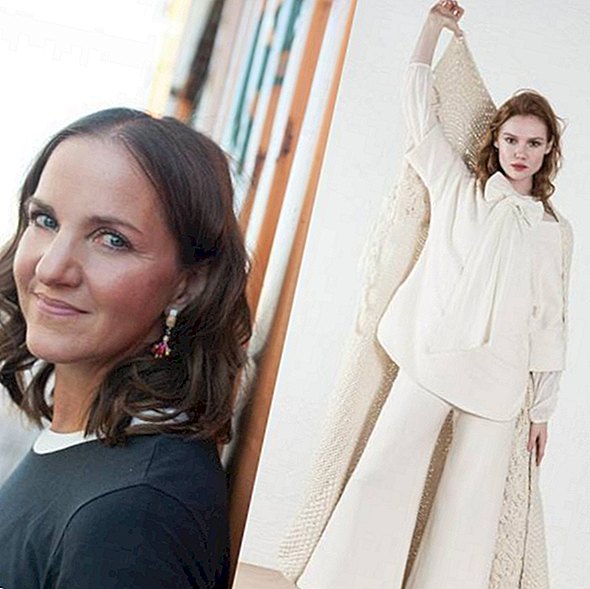Fair Fashion: These colors and materials are currently in fashion

Fair fashion and trends do not really work together. Behind sustainable fashion is the idea of being able to wear parts as long as possible. One that designs and brings such timeless classics to market is Munich label founder Darinka Radenkovic. In 2015, she launched her first own collection of shirts under the name Greentee, which has since expanded to include blouses, dresses and skirts. The extent to which fair fashion is still oriented towards current trends, the designer reveals in an interview with the news agency spot on news.
What are the most important fair-fashion trends?
Darinka Radenkovic: The fair fashion industry is inspired by the looks and styles of high fashion. One finds therefore for example the wide and high cut Marlene pants also in the sustainable area. Even 80s silhouettes with oversize parts, which are made by a belt body-contoured, can be found in the collections again. Only the shrill - sequins, gloss fabrics, shoulder pads - you look in the fair fashion in vain. This fabric finishing contradicts sustainable concepts.
Who will make a find in the fair fashion sector?
Radenkovic: Fair Fashion offers fans of soft, flowing fabrics and cuts a fashionable alternative. Business looks in simple white blouse, black blazer, black trousers or pencil skirt can be seen everywhere. Generally, one focuses rather less on the trendy item, but on overall looks. The personal style is an expression of individuality and appreciation for oneself. Everything is possible! Fashion should be fun!
Which colors are particularly popular this season?
Radenkovic: The autumnal colors of nature are hip: golden yellow, red and purple, blackberry or fire red, as well as earthy browns and ochres, mustard, beige and olive. The current colors are similar to an autumn walk through a forest ... But also "urban" colors such as black and white, a cool gray and more masculine check patterns are in vogue.
Which fabrics / materials - especially in the area of fair fashion - are particularly popular at the moment?
Radenkovic: For my collections I like to use again and again: organic jersey, mesh, organic tulle and in the current collection a cuddly, unique organic cotton fleece. Fleece is known from outdoor fashion, but with a more practical function. I wanted to show that fleece can be fashionable and even elegant. "Upcycling" is very popular, ie the conversion of textiles made from synthetic fibers. I do not "upcycle" my collections because I do not want to work with synthetic fibers - these are often too skin-incompatible. Rather, we research for other natural substances, such as fabrics from bamboo, hemp or nettle.
Which sustainably produced fabrics are particularly warm at cool temperatures?
Radenkovic: Of course! The organic cotton fleece used in our current greentee collection Leaves is something very special due to its materiality and its fibers! It has a balancing heat function and is therefore perfect for the transitional period. Organic fleece meets the demand for a warming textile and fashion.
The layered look is always very popular in autumn. How does the perfect layer look succeed?
Radenkovic: Layers should be limited to a maximum of three shifts and, of course, not just a combination of clothes. You create tension through contrasts and alleged contradictions. For example, a thick wool sweater fits to a delicate silk skirt, a lingerie dress to heavy boots, a slightly transparent tulle blouse to a rocking leather jacket. The layering look lives from different lengths, it should always flash a little fabric. The silhouette should be balanced. The sustainable fashion industry offers numerous possibilities for all style and figure types! I wish all women much pleasure in creating their own individual look.
What do you have to pay attention to when buying fair fashion?
Radenkovic: I remain skeptical about the "sustainable concepts" of big, well-known fashion brands. Although organic cotton is used, the in-house infrastructure continues to be used for production, for example in India or Bangladesh. So socioeconomic standards are hardly improved. When buying fair fashion, the GOTS certificate guarantees the use of water-saving organic cotton as well as the chemical-free cultivation of plants and environmentally friendly dyeing processes. The GOTS seal (Global Organic Textile Standard) is awarded by the International Association of Natural Textile Industry. On textiles, fabrics and materials containing 70 to 90 percent biofibres. The safe source of origin is guaranteed.
For laymen, the certificate jungle is often overwhelming. Which tip do you have?
Radenkovic: The issue of certificates and quality seals for fair fashion is a bit confusing. There are too many...However, the consumer can always ask the retailer, in the sense of "who made my clothes?" This interest in production and "content" will help shape the transition to a healthier and more ethical textile industry. Many individuals can move a lot! Awareness creates change.










